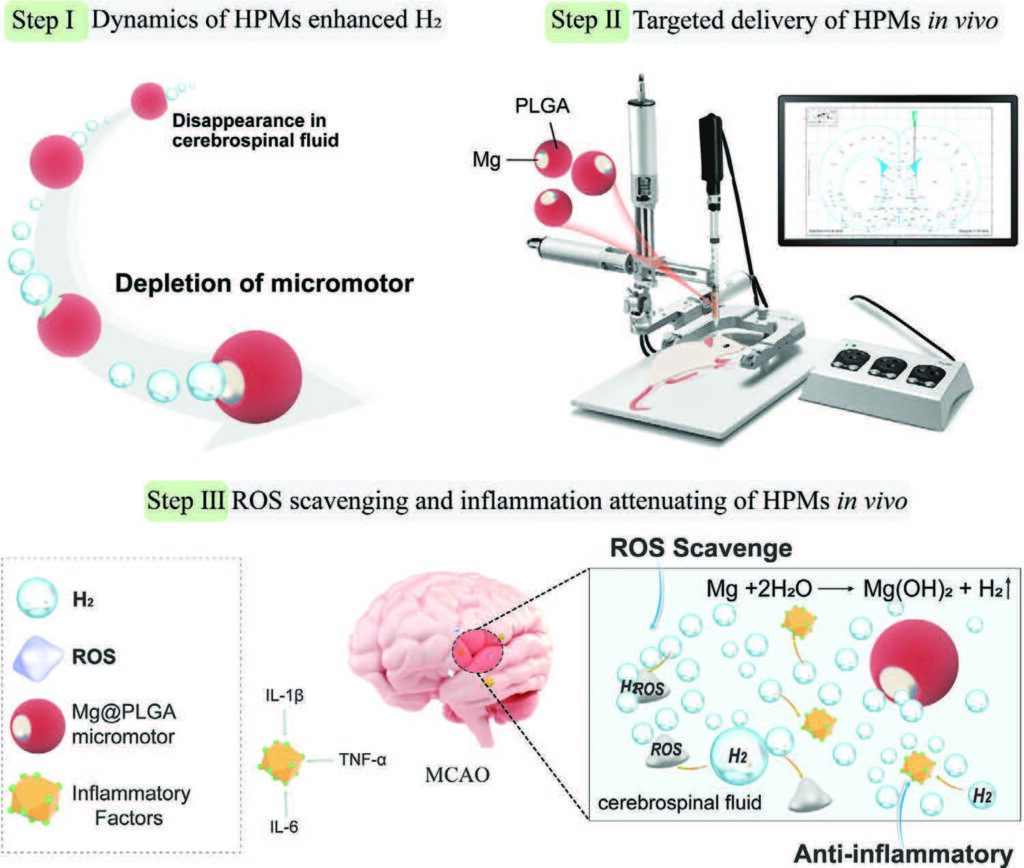Minimally Invasive Therapy: Hydrogen‐Powered Microswimmers for Precise and Active Hydrogen Therapy Towards Acute Ischemic Stroke
- Post by: stomatocyte
- July 1, 2021
- Comments off

Biodegradable microswimmers offer great potential for minimally invasive
targeted therapy due to their tiny scale, multifunctionality, and versatility.
However, most of the reported systems focused on the proof-of-concept on
the in vitro level. Here, the successful fabrication of facile hydrogen-powered
microswimmers (HPMs) for precise and active therapy of acute ischemic stroke
is demonstrated. The hydrogen (H2) generated locally from the designed magnesium
(Mg) microswimmer functions not only as a propellant for motion, but
also as an active ingredient for reactive oxygen species (ROS) and inflammation
scavenging. Due to the continuous detachment of the produced H2, the motion
of the microswimmers results in active H2 delivery that allows for enhanced
extracellular and intracellular reducibility. With the help of a stereotaxic apparatus
device, HPMs were injected precisely into the lateral ventricle of middle
cerebral artery occlusion (MCAO) rats. By scavenging ROS and inflammation
via active H2, MCAO rats exhibit significant decrease in infarct volume,
improved spatial learning and memory capability with minimal adverse effects,
demonstrating efficient efficacy on anti-ischemic stroke. The as-developed
HPMs with excellent biocompatibility and ROS scavenging capability holds
great promise for the treatment of acute ischemic stroke or other oxidative
stress induced diseases in clinic in the near future.
